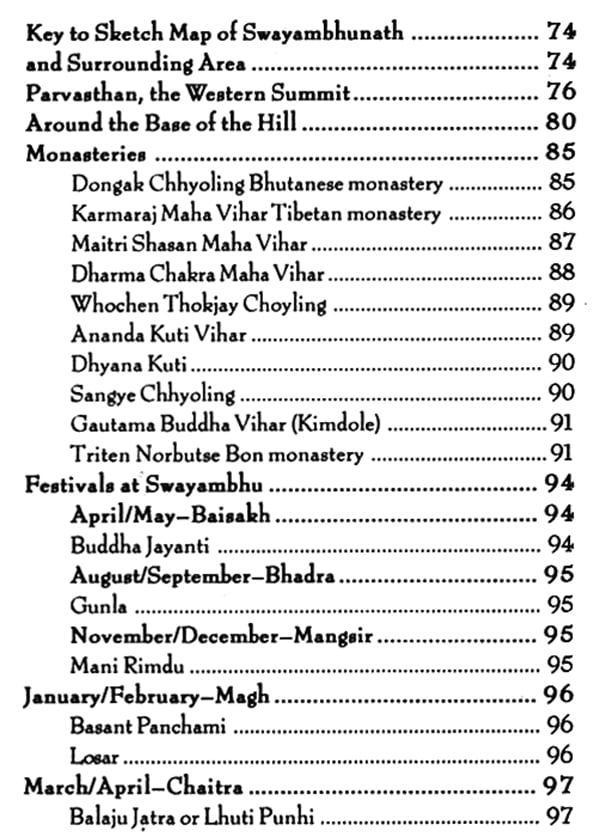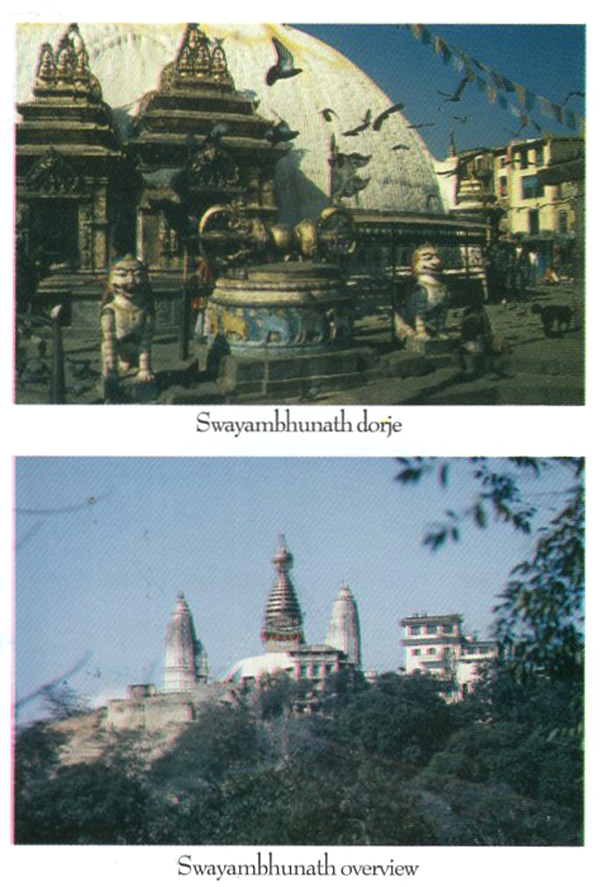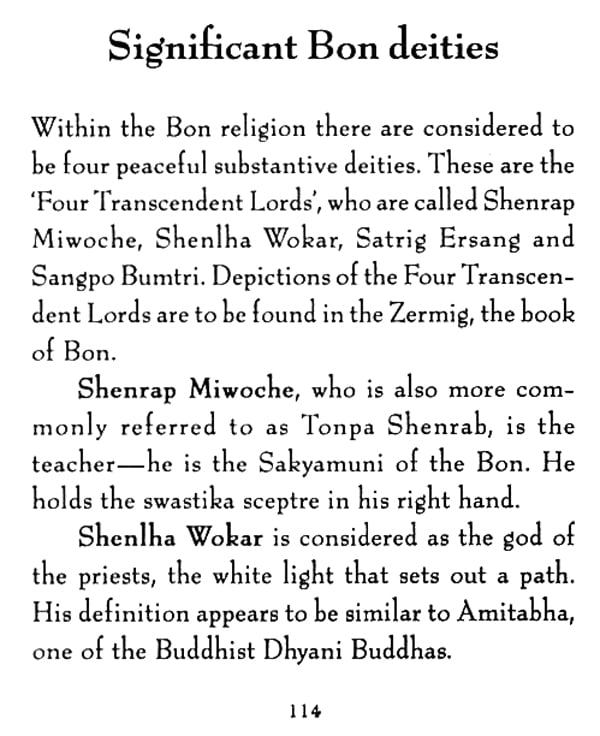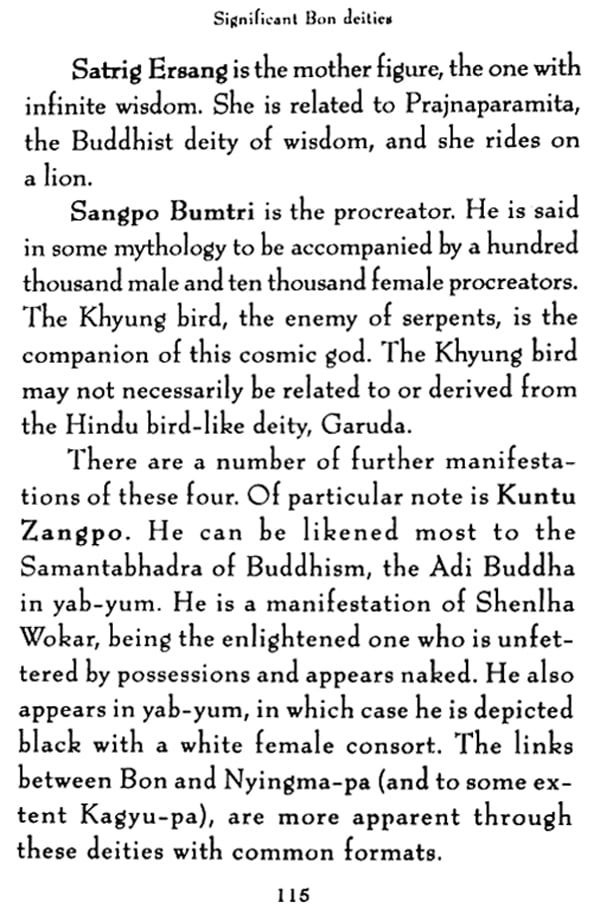
Swayambhunath (A Sanctuary of Buddha)
Book Specification
| Item Code: | NAX577 |
| Author: | Sian Pritchard- Jones and Bob Gibbons |
| Publisher: | Pilgrims Publishing, Varanasi |
| Language: | English |
| Edition: | 2008 |
| ISBN: | 9788177697483 |
| Pages: | 141 (Throughout color Illustrations) |
| Cover: | PAPERBACK |
| Other Details | 6.00 X 4.00 inch |
| Weight | 110 gm |
Book Description
Bob Gibbons and Sian Pritchard-Jones have been visiting Nepal since the mid 1970s. They have returned each year, usually to lead treks or to drive overland tours across India or Asia.
For some years now they have been helping with the editing and production of out-of-print books and other volumes for Pilgrims Publications in Kathmandu. Their first venture with Pilgrims was the publication of a trekking guide to Mus-tang and one to Tibet, which Sian also translated into French. They broadened their knowledge considerably with the research, collating and publication of the Erotic Art of the Kathmandu Valley. This was followed by a comprehensive cultural guidebook-Kathmandu: Valley of the Green-Eyed Yellow Idol. A guidebook to Boudhanath is currently also underway.
In 2007 they wrote two books for Pilgrims Publications, entitled Ladakh: Land of Magical Monasteries and Kailash and Guge: Land of the Tantric Mountain.
For Cicerone Press, a well known British publisher of walking guides, they have written a trek-king guide to Kailas! as well as an updated guide to the Grand Canyon and several of the other canyons in Utah.
They have also travelled extensively in and across Africa, and have written the fourth edition of the Bradt travel guide Africa Overland, plus updated editions of the Maldives and Cape Verde Islands guides for the same publisher.
What is Swayambhunath? It is perhaps the most famous image of all Nepal; the tall white stupa gilded with gold, its eyes surveying every corner of the valley. Perched on a hilltop west of the city, it is also known as the Monkey Temple, for monkey abound here. The great structure presents an evocative vision. The all-seeing eyes watch over all, whether they have climbed the stairs or arrived more easily by car.
But why is it there and what is its significance? For answers we must turn, as ever in this valley, to legend.
Swayambhu meaning 'the self-created: is the eternal, the self-created flame of the Adi Buddha. And this Buddha, with its curious mysterious eyes, came to reside on a hill that grew from the lotus plant out of a vast lake. Facing across the valley in the direction of the celestial points are the Buddhas of enlightenment, the Dhyani Bud-dhas showing a path through meditation. And so the story continues.
However many times you go to Swayambhunath, there are still more corners to discover, more legends waiting to be unravelled. We hope this book will supply the answers to the questions you never thought about before. Every day devotees throng the great shrine, seeking its blessings, worshipping the powerful forces and deities. Swayambhunath rises like a sentinel, watching over the valley; guarding its secrets well. It stands high waiting for the morning mist to clear with the warming rays of the sun; to shine its rejuvenating powers across the valley to the Himalayas beyond.
In the beginning was the Adi Buddha, the self-created. And this Buddha, with curious mysterious eyes, came to reside on a hill that grew from the lotus plant out of a vast lake. Here in the valley of the Buddha, the valley of the Gods and Goddesses, is the hill of the self-existent one, known as Swayambhunath.
Far from the madding crowd, or perhaps not anymore, to the west of the city is the hill of Swayambhunath, also known as the Monkey Temple because of the large number of monkeys that live there. Swayambhu means 'the self-created'. It is said to be the divine lotus flower float-ing above the lake that once covered the Kathmandu valley. This is the most famous image of all Nepal; the tall white stupa gilded with gold, its eyes surveying every corner of the valley. The great structure presents an evocative vision. The all-seeing eyes watch over the devoted throng.
Swayambhu is worshipped as the Adi Bud-dha, the Buddha without beginning or end. The Adi Buddha is primordial and the eyes are his. He also reveals himself as a blue flame emanating from a lotus.
As an indication of its importance to the people, a picture of Swayambhunath is found on the silver-coloured Nepalese fifty paisa (half rupee) coin.
**Sample Pages**














